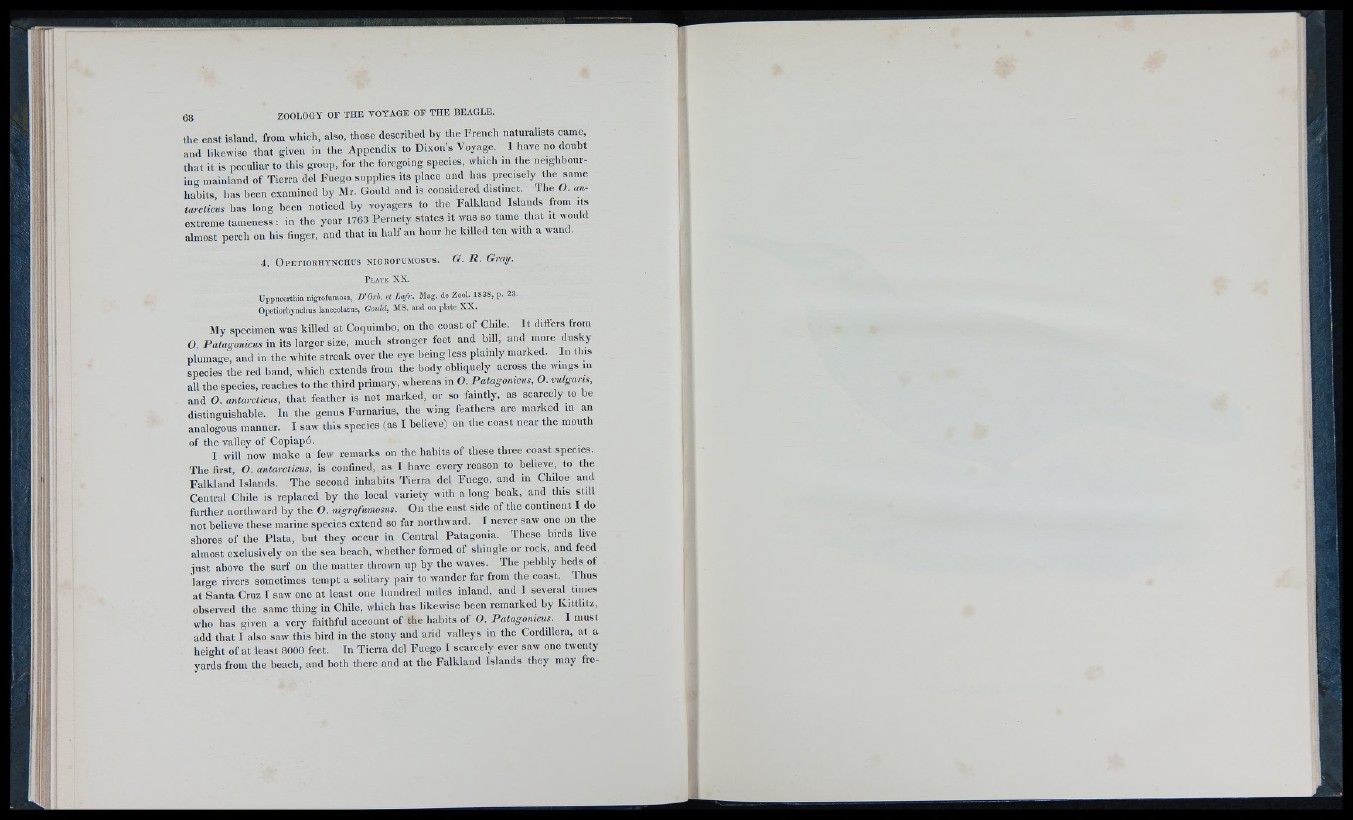
the east island from which, also, those described by tbe French naturalists came,
and likewise that given in the Appendix to Dixons Voyage. I have no doubt
that it is peculiar to tliis group, for the foregoing species, winch in tlie neiglibour-
ino- mainland of Tierra del Fuego supplies its place and has precisely the same
habits, has been examined by Mr. Gould and is considered distinct. The O. <m-
tarcticus lias long been noticed by voyagers to tiie Falkland Islands from its
extreme tameness : in the year 1763 Pernety states it was so tame that it would
almost percli ou his finger, and that in half an hour he killed ten with a wand.
4 , O p e t io r h y n c h u s n ig r o f u m o s u s . G. R . Gray.
Uppucerthia nigrofuniosa, D ’Orh. et L a fr. Mag. de Zool. 1838, p. 23.
Opetiorhynchus laiiceolatus, Goukl, MS. and on plate XX.
My specimen was killed at Coqnimbo, on the coast of Chile. It differs from
in its larger size, much stronger feet and bill, and more dnsky
plumage, and in the white streak over the eye being less plainly marked. In tins
L e c ie s the red band, which extends from the body obliquely across the wings in
all the species, reaches to the third primary, whereas in O. Patagomcus, O. vulgams,
and O. antarcticus, that feather is not marked, or so faintly, as scarcely to be
distinguishable. In the genus Furnarius, the wing feathers are marked in an
analogous manner. I saw this species (as I believe) on the coast near the montli
of the valley of Copiapó.
I will now make a few remarks on the habits of these three coast species.
The first, O. antarcticus, is confined, as I have every reason to believe, to the
Falkland Islands. The second inhabits Tierra del Fuego, and in Chiloe and
Central Chile is replaced by the local variety with a long beak, and this still
further northward by the O. nigrofumosus. On the east side of the continent I do
not believe these marine species extend so far northward. I never saw one on the
shores of the Plata, but they occur in Central Patagonia. These birds live
almost exclusively on the sea beach, whether formed of shingle or rock, and leed
just above the surf on the matter thrown up by the waves. The pebbly beds oí
large rivers sometimes tempt a solitary pair to wander far from the coast. Thus
at Santa Cruz I saw one at least one hundred miles inland, and I several times
observed the same thing in Chile, which has likewise been remarked by Kittlitz,
who has given a very faithful account of the habits of O. Patagonicus. I must
add that I also saw this bird in the stony and arid valleys in the Cordillera, at a
height of at least 8000 feet. In Tierra del Fuego I scarcely ever saw one twenty
yards from the beach, and both there and at the Falkland Islands they may fre